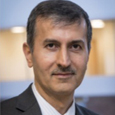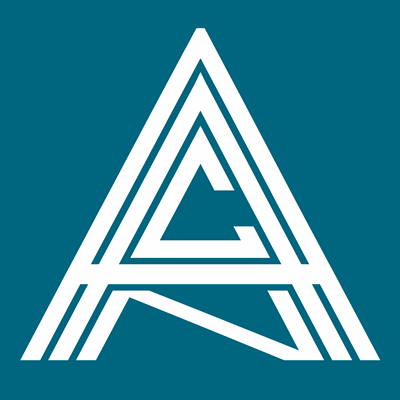Alireza Mansouri MD, Joseph Chen, Kari Smilsky, Farhad Pirouzmand MD
Neurofibromatosis type 2 (NF2) is an autosomal dominant disorder with an incidence of 1: 33,000. Approximately 90% of NF2 patients commonly suffer from bilateral acoustic neuromas (AN), aka vestibular schwannomas, which progressively result in sensorineural hearing loss either directly attributable to tumor growth or following intervention. The primary disability in NF2 in the late stages is total deafness that has very limited opportunities for treatment. While some patients adapt by acquiring the ability to lip-read prior to complete hearing loss, they are nonetheless dependent on visual cues for comprehension of speech. Furthermore, important environmental sounds would not be captured.
In many of these patients, hearing loss is secondary to the injury or disruption of the cochlear nerve, therefore, they are not candidates for cochlear implantation as a method of hearing rehabilitation; rather, they may be candidates for auditory brainstem implantation (ABI).
ABI technology is an extension of the cochlear implant-a biomedical marvel that has been used in nearly half million people around the world. ABI is designed for use in those who do not have an implantable cochlea, or if the brainstem is the only access point to the auditory pathway. Sounds are detected by a microphone in an externally worn speech processor, coded into a digital signal that is transmitted across the skin to the implanted receiver-stimulator, and transmitted signals are then converted to electrical stimulation carried by electrodes located on a small paddle. The placement of the paddle over the cochlear nucleus requires gentle cerebellar retraction in a surgical approach most appropriate for the patient. It takes approximately 4 hours with meticulous real-time electrophysiological testing. To date, studies pertaining to nearly 1,000 NF2 patients undergoing ABI implantation have been reported.
The Food and Drug Administration (FDA) – the American device and pharmaceutical regulatory agency – has approved ABIs for commercial use while Health Canada has not yet given its full approval. An application for 'compassionate use exemption' is required for Canadian hospitals in each individual ABI patient. Sunnybrook Hospital is the first group in Canada to develop a rigorous team-based approach for the preoperative evaluation of patients for assessment of surgical candidacy. It is funded through the cochlear implant program in Ontario with Sunnybrook HSC as the designated site. Appropriate candidates undergo ABI implantation by a surgical team comprised of a neurosurgeon (Dr. Farhad Pirouzmand) and an otolaryngologist (Dr. Joseph Chen). A comprehensive post-operative auditory rehabilitation protocol has also been established within the Department of Otolaryngology-Head & Neck Surgery.
The Sunnybrook Skull Base Surgery Program has one of the largest surgical experience in the management of Acoustic Neuromas in Canada. The role of hearing related therapies in NF2 are usually discussed from the very beginning of assessment with a long-term customized plan in mind.
With regards to the evaluation of NF2 patients with bilateral AN, the preoperative evaluation consists of patients first undergoing a detailed auditory testing by our group’s audiologists. Options including optimized hearing aid use, cochlear implantation for those who have not yet had surgical treatment, and ultimately, candidacy for an ABI will be discussed based on hearing profile and past therapies. In addition, appropriate patients are also referred to sign language courses, speech reading courses, and communication strategy support groups that are offered through the Canadian Hearing Society and other community-based centres. Patients who have single sided deafness after surgery and are not amenable to standard hearing aid fitting undergo standard contralateral re-routing of sound (CROS- Cross Routing of Signals). This can be fitted by any audiologist/ hearing aid dispenser. Alternatively, bone conduction devices can be used; at Sunnybrook, our group utilizes the MedEl BoneBridge. Previously, bone anchored hearing aids (BAHA) and Sound Bite devices were used to achieve contralateral routing of signals.
To optimize surgical outcomes, a team-based approach is taken. In addition to surgeons, the participation of our neurophysiology colleagues is of immense value. With regards to technology, we utilize imaging, neuro-navigation, microscope, neuro-monitoring (neurophysiology), and electrocorticography. An altered incision is used to accommodate the subgaleal placement of the receiver-stimulator. The tumor resection and identification of the optimal position of the ABI electrode is performed using standard anatomical landmarks and brainstem recording using a placement electrode. When the optimal position is identified, the test electrode is replaced by a permanent 12-channel electrode array ABI. Further eABR (electrically evoked auditory brainstem recordings) are performed to confirm the electrode placement. To minimize damage to the facial nerve, we take advantage of the latest imaging techniques to map its course. Neuro-monitoring is used to identify and preserve the important cranial nerves.
Following standard post-operative monitoring applicable to any surgical approach to the skull base, the patients are discharged home when appropriate. The first postoperative stimulation is performed at 6 to 8 weeks, under heart rate and blood pressure monitoring. This is performed by first using the impedance/ coupling test to verify the electrode function. Then each electrode is stimulated with monopolar stimulation, assessing for sound quality and pitch and to ensure there are no non-auditory effects (e.g. facial nerve stimulation); patient comfort is used to guide the limit of stimulation.
Pitch ranking is performed so the electrodes can be ordered in a tonotopic arrangement. The programming of the device is complex and requires an experienced implant audiology team. This is done several times over the first 3-4 months and then again at 6 months and 1 year and then as needed for the remainder of the recipient’s life. This is required to optimize functional outcomes. Patient commitment to full participation throughout the process is critical. In addition to hearing rehabilitation, we also recognize that NF2 patients could require vestibular and facial nerve rehabilitation as well. Ataxia and oscillopsia from bilateral peripheral vestibular dysfunction are managed by vestibular exercises through physiotherapy at Sunnybrook Centre for Independent Living.
For more information about our program please contact Kari Smilsky: [email protected]

Farhad Pirouzmand MD, having completed residency in the neurosurgery at the University of Toronto, undertook a fellowship in skull base and reconstructive surgery and another fellowship in spinal trauma and peripheral nerve surgery. Prior to joining the neurosurgical faculty at the University of Toronto in 2003, he served as Program Director of Neurosurgery at the University of Saskatchewan, where he also completed a Masters in Epidemiology on the topic of skull topographic organization. His main areas of interest are skull base, and orbital reconstructive surgery. He is actively involved in neurosurgery clinical trials at Sunnybrook Health Sciences Centre and in leadership roles in undergraduate and resident education at the University of Toronto. Dr. Pirouzmand is currently associate professor of neurosurgery at the University of Toronto.
